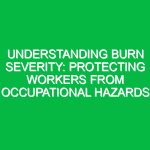Introduction
Chemical hazard symbols are vital tools in the Health, Safety, and Environment (HSE) domain, serving as visual warnings that communicate the potential dangers associated with various substances. In workplaces where chemicals are handled, these symbols play a crucial role in ensuring safety and compliance with regulations. They act as immediate reminders of the risks involved and guide users in employing the necessary precautions. This article delves into the world of chemical hazard symbols, exploring their significance, classifications, and the regulations governing their use, all while aiming to enhance safety awareness among workers and the general public.
Understanding chemical hazard symbols is not merely an academic exercise; it’s a practical necessity. Imagine a factory floor filled with numerous containers, each holding different substances. Without clear hazard symbols, employees might unknowingly expose themselves to toxic chemicals or reactive substances. Thus, recognizing these symbols and understanding their meanings can be the difference between a safe working environment and a potential disaster.
Understanding Chemical Hazard Symbols
Chemical hazard symbols are standardized pictograms designed to convey information about the hazards of chemical substances quickly and effectively. The Globally Harmonized System of Classification and Labelling of Chemicals (GHS) categorizes these symbols into various classes based on the type of hazard they represent. Each symbol comprises a distinct image and often includes a signal word, such as “Danger” or “Warning,” that indicates the severity of the hazard.
Types of Chemical Hazard Symbols
Chemical hazard symbols fall into several categories, each corresponding to specific types of hazards. Below are some of the most prevalent symbols used in HSE contexts:
- Flame: Represents flammable materials and self-heating substances.
- Skull and Crossbones: Indicates toxic substances that may cause death or serious health issues.
- Exclamation Mark: Denotes less severe hazards, such as skin irritation or respiratory issues.
- Corrosion: Symbolizes corrosive materials that can damage skin, eyes, or metals.
- Health Hazard: Represents substances that can cause serious health effects, including carcinogenicity and reproductive toxicity.
- Gas Cylinder: Indicates gases under pressure, which may explode if heated.
- Environmental Hazard: Warns of substances that may cause harm to the environment.
Each symbol conveys critical information that informs workers about the necessary precautions to take when handling these substances. For instance, the flame symbol not only signifies that a substance is flammable but also suggests that it should be kept away from heat sources and open flames.
Importance of Chemical Hazard Symbols in the Workplace
The importance of chemical hazard symbols in the workplace cannot be overstated. They serve several key functions:
- Enhancing Safety: By clearly indicating hazards, these symbols help workers take appropriate precautions, thereby reducing the risk of accidents and injuries.
- Facilitating Training: Symbols provide a universal language that simplifies the training process. Employees can quickly learn to recognize hazards without needing to memorize complex chemical names.
- Supporting Compliance: Many regulatory bodies require the use of chemical hazard symbols. Adhering to these regulations not only ensures safety but also protects organizations from legal repercussions.
- Promoting Environmental Awareness: By including symbols for environmental hazards, organizations can foster a culture of sustainability and responsibility among their employees.
Real-World Applications and Anecdotes
Consider a scenario in a chemical manufacturing plant where two workers, John and Sarah, are tasked with handling various chemical substances. John is well-versed in recognizing chemical hazard symbols. He notices a container with the “Skull and Crossbones” symbol. Understanding the implications, he dons personal protective equipment (PPE) before proceeding. Meanwhile, Sarah, unfamiliar with the symbol, assumes the substance is harmless. As a result, she begins handling the chemical without protection.
In this situation, John’s knowledge of chemical hazard symbols not only keeps him safe but potentially prevents a severe incident. This anecdote highlights the real-world importance of understanding these symbols and their meanings.
Best Practices for Safety Awareness
To maximize the effectiveness of chemical hazard symbols in promoting safety, organizations should implement the following best practices:
- Training Programs: Regular training sessions should be conducted to educate employees about chemical hazards and the meanings of various symbols.
- Clear Labeling: Ensure that all chemical containers are labeled clearly with appropriate hazard symbols, making them easily visible.
- Regular Audits: Conduct routine audits to ensure compliance with safety regulations and verify that hazard symbols are being used correctly.
- Encouraging Reporting: Create an environment where employees feel comfortable reporting potential hazards or discrepancies in labeling.
Regulations and Standards Governing Chemical Hazard Symbols
In many countries, specific regulations govern the use of chemical hazard symbols. The Globally Harmonized System (GHS) is one of the most significant frameworks, adopted by many nations to standardize the classification and labeling of chemicals. The GHS mandates that chemical manufacturers and importers provide safety data sheets (SDS) that include hazard symbols, ensuring that users are informed about potential risks.
In the United States, the Occupational Safety and Health Administration (OSHA) plays a crucial role in enforcing these regulations. OSHA’s Hazard Communication Standard (HCS) aligns with the GHS, requiring chemical manufacturers to classify hazards and provide appropriate labeling. Companies that fail to comply with these regulations may face significant fines and legal action.
Similarly, in the European Union, the Classification, Labelling and Packaging (CLP) regulation aligns with the GHS framework, ensuring that chemical hazards are communicated effectively across member states. Understanding these regulations is essential for organizations to maintain compliance and promote a culture of safety.
Conclusion
Chemical hazard symbols are more than just images; they represent critical information that can save lives and protect the environment. By understanding the various hazard symbols and their implications, workers and organizations can take proactive measures to ensure safety in the workplace. As we have explored, these symbols serve to enhance safety, facilitate training, support compliance, and promote environmental awareness.
In an increasingly complex world of chemicals and industrial processes, the importance of chemical hazard symbols in the HSE domain cannot be underestimated. As individuals and organizations strive to create safer working environments, awareness and understanding of these symbols must remain a priority. By investing in training and adhering to regulatory standards, we can foster a culture of safety that ultimately benefits everyone.


